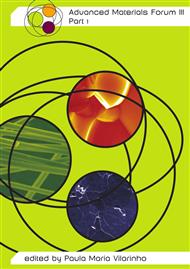p.1462
p.1467
p.1472
p.1477
p.1483
p.1488
p.1493
p.1501
p.1506
Effect of Membrane Pore Size and Membrane-Solute Interactions on Lysozyme Ultrafiltration
Abstract:
A model based on steric hindrance mechanisms [1] is used to determine the pore sizes of two ultrafiltration (UF) membranes. The lysozyme rejection coefficients of those membranes are predicted through the same model after modification of the pore size and solute radius by taking into account the development of electric double layers. Two asymmetric cellulose acetate membranes M1 and M2 were prepared and characterized. Membrane M1 has an hydraulic permeability of 2.1x10-6 m/s/bar, a molecular weight cut-off (MWCO) of 30,000 Da and an average pore radius of 2.6 nm. Membrane M2 has an hydraulic permeability of 5.9x10-6 m/s/bar, a molecular weight cut-off (MWCO) of 60,000 Da and an average pore radius of 5.3 nm. Aqueous solutions of lysozyme containing a NaCl concentration of 0.1M were ultrafiltrated through membranes M1 and M2. The predicted lysozyme rejections considering the development of electric double layers on the protein and membrane pore surfaces, are in good agreement with the experimental results.
Info:
Periodical:
Pages:
1483-1487
Citation:
Online since:
May 2006
Authors:
Keywords:
Price:
Сopyright:
© 2006 Trans Tech Publications Ltd. All Rights Reserved
Share:
Citation:


